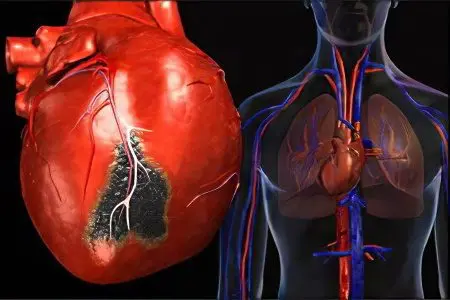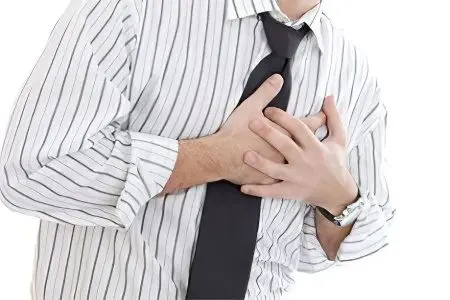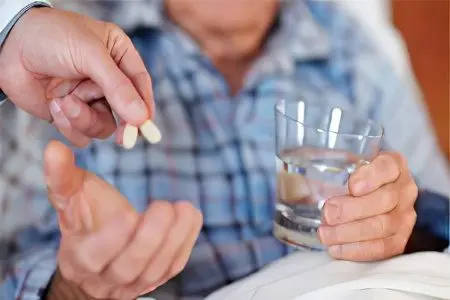Contents
Myocarditis is an inflammation of the heart muscle (myocardium). The disease can occur as a result of exposure to infectious agents, toxins, and as an allergic or autoimmune reaction. Inflammation of the myocardium can be both a symptom of various diseases, and an independent disease. Very often it occurs due to rheumatism, one of the manifestations of which is along with pericarditis and endocarditis. Myocarditis is acute and chronic; the acute form often transforms into cardiomyopathy.
Pathology is characterized by various symptoms, which can manifest themselves brightly or have a latent course. Diagnosis of the disease is not difficult only when, after a viral infection, the patient has signs of an acute malfunction of the heart. With an erased clinical picture, making a correct diagnosis can be quite problematic.
Recently, the disease affects young, able-bodied people (30-40 years old). Myocarditis leads to a decrease in pumping function, circulatory disorders, heart rhythm and conduction. This entails the most serious consequences: disability and even death.
Cardiac myocarditis – what is it?

Myocarditis is an active process of inflammation in the myocardium, in which there is necrosis and degeneration of cardiomyocytes (muscle cells of the heart). At the same time, the pathological changes that occur in the heart during myocarditis differ from the changes that occur during a heart attack. Cardiomyocytes die and undergo a process of fibrosis. The appearance of inflammatory infiltrates can provoke any immune cells, but the cause of this inflammation is most often an external factor.
As for the statistics of myocarditis, it is rather difficult to indicate specific numbers. The fact is that the disease often proceeds hidden and is not diagnosed by doctors. Long-term chronic inflammation leads to the fact that a person develops dilated cardiomyopathy. Moreover, this happens many years after the impact of the etiological factor that gave rise to myocarditis.
Routine autopsy reveals myocarditis in only 1-4% of cases. As for European countries and North America, viral infections are considered to be the leading cause of myocarditis. Damage to the heart muscle occurs, according to various sources, in 5% of cases after all viral infections. In this case, severe cardiac pathology will be observed in 0,5-5,0% of cases.
The increase in the risk of developing myocarditis is additionally influenced by factors such as bearing a child, the age of a person (most often myocarditis develops in infants and adolescents), as well as the time of year.
The mechanism of the development of the disease is currently being actively studied. Scientists believe that viruses affect the antigens sent by cardiomyocytes, as a result, it is their immune cells that are perceived as foreign and begin to destroy. Thus, an immune cellular reaction develops.
More often than others, enteroviruses, influenza viruses, Coxsackie A and B viruses lead to myocarditis. From 25 to 40% of HIV-positive people have signs of heart dysfunction, and only 10% show any symptoms.
There is more and more evidence that myocarditis can develop after a long time after undergoing radiation therapy and acts as a distant complication of it. In this case, the arteries and valves of the heart, as well as the myocardium itself, can be damaged even many years after exposure. Therefore, modern radiation therapy, taking into account this fact, should be carried out in such a way that a person can avoid such distant heart problems.
Causes of myocarditis
The causes of myocarditis can be various acute viral infections and bacteria. Influenza, measles and rubella, chickenpox, diphtheria, scarlet fever, pneumonia, sepsis, and so on contribute to its occurrence. Viruses are the most common cause of this pathology. It has been proven that during viral epidemics the incidence of myocarditis increases dramatically. It is noteworthy that two or more different infections can be the cause of myocarditis. One of them, most often, is a condition for damage to the heart muscle, and the second is its direct cause.
In addition to infection, myocarditis can be caused by poisoning and disorders of the immune system (including the administration of serums and taking certain medications). The etiology of some myocarditis (Abramov-Fiedler’s idiopathic myocarditis) has not yet been established.
Physical activity is not recommended for people with myocarditis, as they can aggravate the disease.
Myocarditis symptoms

The symptoms of myocarditis depend on how damaged the myocardium is, where exactly the inflammatory process is located, how acute it is, and how quickly it progresses. In any case, the contractile function of the heart muscle suffers, there are heart rhythm disturbances. If the provoking factor is an infection or an allergy, then myocarditis manifests immediately after the disease. Rheumatic myocarditis has a different symptomatology. A latent course of the disease is not excluded.
Symptoms of viral and infectious-toxic myocarditis appear with severe intoxication; with infectious-allergic myocarditis, signs of myocardial inflammation occur a couple of weeks after an exacerbation of a chronic disease; in case of poisoning (serum and drug myocarditis), the lesion manifests itself 12–48 hours after the administration of serum or medication.
Infectious-toxic myocarditis is most often preceded by a prodromal phase with flu-like symptoms. There may be skin rashes, as well as the occurrence of pain in the muscles and joints. For children, the Coxsackie virus is especially dangerous.
Sometimes myocarditis does not have pronounced clinical manifestations and can only be detected after an ECG examination.
Common symptoms of myocarditis are:
Increased fatigue;
Unreasonable weakness;
Shortness of breath, aggravated by physical exertion. Although sometimes she appears at rest;
There may be a cough and a feeling of heaviness in the right hypochondrium;
Severe myocarditis is characterized by swelling in the legs and a decrease in the volume of urine excreted;
Pain in the region of the heart. They can proceed according to the type of seizures, and may have a aching character. Most often, they disturb a person for a long time and are not associated with physical activity;
Increased heart rate or its work with interruptions – these symptoms indicate existing heart rhythm disturbances. Patients complain that they experience a feeling of fading or cardiac arrest;
Body temperature remains within the normal range, although its increase to subfebrile levels is not excluded;
The person often suffers from excessive sweating;
Sometimes there are painful sensations in the joints;
Blood pressure is often below normal;
The skin is pale, often bluish in color. This is especially noticeable on the tips of the fingers, on the lobes of the ears, on the tip of the nose;
As for the pulse, it can be both enhanced and slow;
Dilated jugular veins indicate severe heart failure.
The heart is enlarged in size, even small foci of infiltration in the organ are capable of provoking the development of arrhythmias and leading to the death of the patient. Despite the fact that there are many symptoms of myocarditis, often only 1-2 of them appear, and in 1/3 of patients there are no signs of cardiac pathology at all.
There are such variants of the course of myocarditis as acute myocarditis of severe and mild course, recurrent myocarditis and chronic myocarditis.
Types of myocarditis
Myocarditis can differ in etiology, clinical manifestations and consequences:
Bacterial myocarditis are quite rare and are caused mainly by Staphylococcus aureus or Enterococcus aureus. This form of the disease affects the valve rings and interventricular septa. Bacterial myocarditis also occurs in diphtheria (in 25% of patients), being its most serious complication and a frequent cause of death. Diphtheria produces a specific toxin that prevents protein synthesis. It is he who contributes to the expansion, flabbiness of the heart, worsens its contractility. Patients are prescribed antitoxins and antibiotics;
Chagas disease develops because of the simplest organisms – trypanos. In this case, extensive myocarditis occurs, which usually manifests itself several years after infection. The disease has a predominantly chronic course, exacerbation can occur only in extremely rare cases. The disease is characterized by progressive heart failure and arrhythmia; it is they who, in the absence of adequate therapy, lead to death;
Myocarditis due to toxoplasma, is a rare form of damage to the heart muscle and develops most often in young people with weak immunity. The disease is characterized by heart failure, arrhythmia, conduction disturbances;
Giant cell myocarditis is of unknown origin. In this form, multinucleated giant cells are found in the heart muscle, causing rapidly progressive fatal heart failure. This myocarditis is diagnosed quite rarely, it develops in adults and often occurs together with diseases such as thymoma, systemic lupus erythematosus, thyrotoxicosis;
Lyme Disease – a disease caused by tick-borne relapsing fever. Its typical symptom is a violation of cardiac conduction. Often this form is accompanied by pericarditis and malfunctions of the left ventricle;
Radiation myocarditis occurs due to ionizing radiation. It leads to a variety of acute (less often) and chronic (mainly) disorders of the heart. Together with this form of myocarditis, myocardial fibrosis often develops.
Complications of myocarditis
Complications of myocarditis are manifested in sclerotic lesions of the heart muscle, resulting in the development of myocardial cardiosclerosis.
Acute myocarditis in severe form very quickly leads to the formation of heart failure and arrhythmias in the patient. This, in turn, often provokes the sudden death of a person.
Diagnosis of myocarditis

Diagnosis of myocarditis causes certain difficulties. They are caused not only by the latent course of the disease, but also by the lack of clear criteria for the detection of pathology among doctors.
The main activities that are carried out in order to detect the disease are as follows:
Clarification of the patient’s complaints;
Carrying out physical diagnostics, during which it is possible to detect various cardiac disorders, ranging from tachycardia to heart failure. In addition, the patient may have swelling of the extremities, an increase in the jugular veins, congestion in the pulmonary system, etc.;
Carrying out an ECG, the results of which can be used to judge a violation of the heart rhythm, conduction and excitability of the heart. At the same time, it will not be possible to detect any signs specific for myocarditis using an ECG;
Conducting echocardiography. This technique will allow to detect such pathologies of the heart muscle as an increase in its cavities, low contractility and diastolic dysfunction;
Performing lung radiography allows you to diagnose the presence of congestion in the respiratory system, and also makes it possible to determine the size of the heart;
To identify the type of pathogen that led to the development of myocarditis, a BAC-blood culture can be performed or blood is taken for PCR;
MRI of the heart with the use of a contrast agent allows you to see the process of inflammation, to detect swelling in the heart muscle. This is a fairly informative method that produces results in 75% of cases;
The introduction of a catheter into the cavity of the heart to take a biopsy of the myocardium for the purpose of its subsequent histological examination makes it possible to determine myocarditis only in 37% of cases. This is due to the fact that the focus of inflammation can be concentrated anywhere in the heart muscle, and not in where the biopsy was taken from;
The area of necrosis and inflammation can be determined by radioisotope examination of the heart (PET-CT).
Treatment of myocarditis
The treatment of myocarditis, regardless of the cause that provoked it, generally has similar elements. This is due to the fact that with any myocarditis inflammation of the heart muscle occurs and an inadequate response of the immune system to inflammation is observed, which leads to the death of cardiomyocytes and the development of myocardial cardiosclerosis. The listed set of factors determines the tactics of therapy.
Treatment in a hospital can last from 3 weeks to 2 months, depending on the health of the patient.
At this time, three global goals must be achieved:
Carry out medical correction;
Eliminate foci of chronic infection;
Start the physical rehabilitation of the patient.

As for the drug treatment of myocarditis, it involves the appointment of anti-inflammatory drugs and drugs that act on the cause that led to the development of the disease (etiotropic therapy). In addition, the use of antihistamines, antiplatelet agents, agents that help reduce the activity of the sympathoadrenal and renin-angiotensin-aldosterone systems is indicated.
This also includes the intake of immunocorrectors, means for the normalization of metabolic processes.
Since infection becomes the basis for the development of myocarditis, it can be suspected by the severity of inflammation that bacteria or viruses provoked cardiac disorders. So, with the bacterial nature of myocarditis, inflammation is more acute, but at the same time it lends itself well to correction with antibacterial drugs. In addition, bacteria rarely lead to chronic inflammation in the myocardium.
If it is established that myocarditis is of a bacterial nature, then the patient is prescribed a course of antibiotics. Most preferred are drugs from the group of cephalosporins. When the disease has acquired a chronic course, repeated courses of antibiotic therapy with the use of drugs from the group of fluoroquinolones and macrolides are indicated. Their intake is necessarily supplemented with exogenous interferons and inducers of endogenous interferon. Exogenous interferon preparations are especially effective in combating viral myocarditis.
Antihistamines and anti-inflammatory drugs are prescribed to stop inflammation in the heart muscle itself. For this, a short course of the patient takes NSAIDs, as well as anti-allergic drugs.
Symptomatic therapy depends on the severity of the clinical picture of the disease. So, to reduce edema, diuretics are prescribed, etc.
While in the hospital, the patient must be relieved of foci of chronic infection. Sinusitis, tonsillitis, pulpitis are treated. It is important to choose the optimal time for the treatment of these diseases so that the general well-being of the patient does not worsen during therapy.
After discharge, the patient needs rehabilitation measures. He can take them either in a sanatorium or at a district clinic. Treatment with Delagil and antiplatelet drugs continues. Be sure to prescribe aldosterone antagonists, ACE inhibitors, antagonists of B-blockers.
The diet involves the restriction of salt and fluid in the acute period of the disease. The emphasis is on protein foods with the maximum intake of vitamins. The duration of therapy depends on the severity of the disease and ranges from six months or more.
If myocarditis had a latent course, then self-healing without the development of long-term complications is not excluded. If the patient develops heart failure, then the treatment is effective only in 50% of cases. In another 25% of patients, cardiac activity can be stabilized. In the rest of the patients, heart failure continues to progress.









